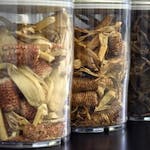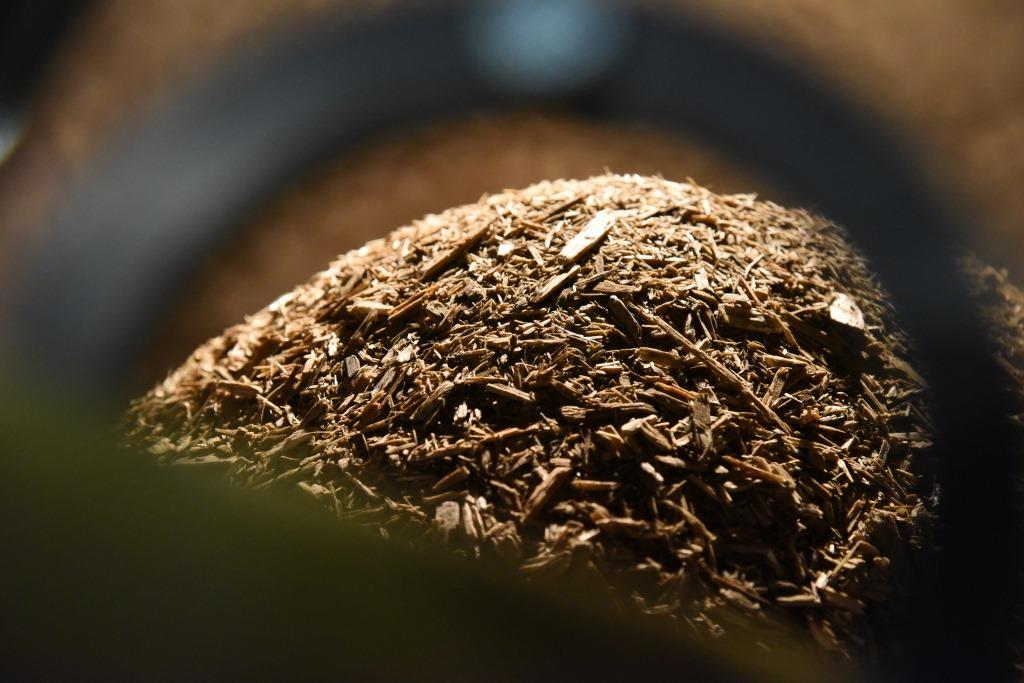The U.S. Department of Energy has a goal to develop and demonstrate transformative bioenergy technologies to fuel a more sustainable nation. Reaching that goal will require roughly a billion tons of biomass, so we’ll need to rely on a variety of resources to get the job done. That’s why researchers at Idaho National Laboratory and elsewhere are testing some surprising and innovative ways to produce the next generation of biofuels.
So, in honor of Bioenergy Day Oct. 19, and just in time for Halloween, we present five bewitching ways to make bioenergy:
 Corn stover. Did you know that much of the gasoline sold in the U.S. contains about 10 percent ethanol made from corn grain? But it turns out corn stover — the leaves, cobs and stalks left after the corn harvest — can be turned into fuel, too. Several companies in the United States and Canada have developed refineries that use corn stover to make ethanol, with more plants set to go into operation in the near future. DOE is also looking into innovative ways to make other fuels, such as gasoline and diesel, from stover.
Corn stover. Did you know that much of the gasoline sold in the U.S. contains about 10 percent ethanol made from corn grain? But it turns out corn stover — the leaves, cobs and stalks left after the corn harvest — can be turned into fuel, too. Several companies in the United States and Canada have developed refineries that use corn stover to make ethanol, with more plants set to go into operation in the near future. DOE is also looking into innovative ways to make other fuels, such as gasoline and diesel, from stover.- Algae. It turns out the same aquatic critters from the black lagoon are photosynthetic powerhouses. In fact, algae grows so fast that some researchers say it could be 10 to 100 times more productive than other bioenergy sources, and the fuel produced from algal biofuels technologies could be used to power everything from cars and trucks to trains and planes.
- Municipal solid waste (otherwise known as garbage). Energy producers have burned trash for power generation and captured gases such as methane for years. INL researchers process MSW into pellets and other easy-to-use formats, and mix it with other types of biomass for conversion to biofuels.
- Beetle-killed trees. A recent pine beetle outbreak left millions of acres of dead trees throughout the Rocky Mountain states. Selectively harvesting some of these trees for conversion to biofuels provides land managers with an additional option to deal with beetle-killed forests, and gives bioenergy producers a valuable source of biomass.
- Blended biomass. If one particular type of biomass isn’t available or costs too much, why not blend several types together? INL researchers have blended corn stover, switchgrass and municipal grass clippings, and formed a “Frankenstein” mixture into pellets to increase quality, reduce costs and minimize supply risks. INL researchers have found that these blends often work better than a single type of biomass for conversion to biofuels.
Researchers also have made biofuels using fungi, grease from restaurants, synthetic bacteria, sugar cane and more. INL scientists have investigated some of these options and found that corn stover and municipal solid waste, in particular, hold tremendous promise as biofuels. These bewitching ideas are all part of DOE’s efforts to advance technologies that can help the U.S. enhance its energy security with homegrown energy sources. Learn more about INL’s bioenergy research here.






